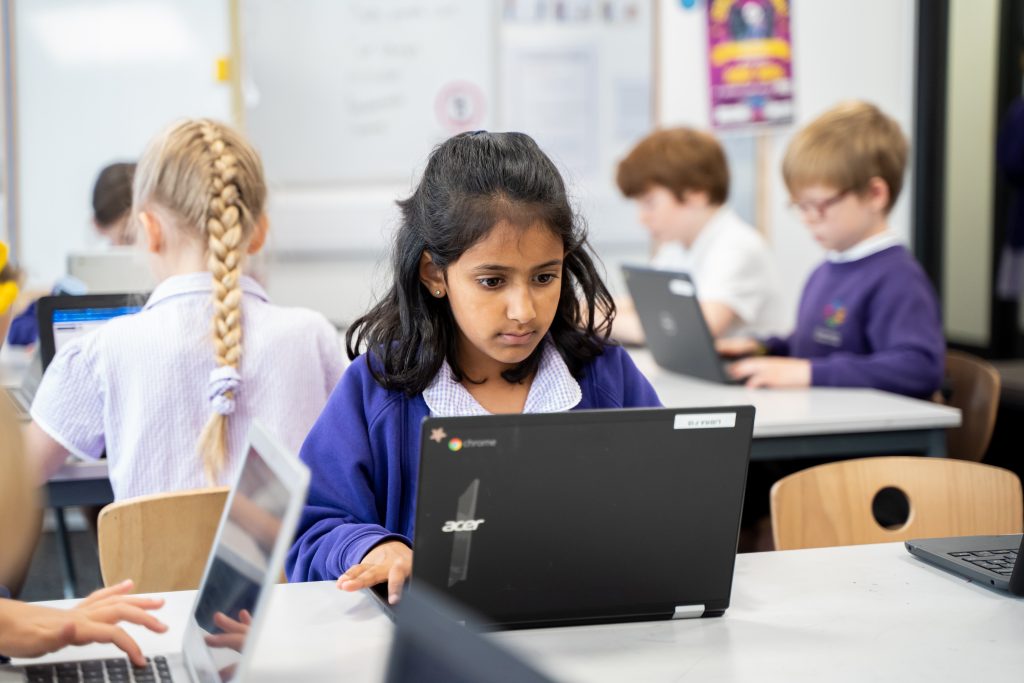 Computing Vision
Computing Vision
At Evendons, we use computing lessons to develop children’s skills and understanding. Technology is everywhere and plays a pivotal part in students’ lives. Therefore, we want to model and educate our pupils on how to use technology positively, responsibly and safely. Our pupils are creators and our broad curriculum encompassing computer science, information technology and digital literacy reflects this.
Computing Intent
Building our knowledge in this subject allows pupils to effectively demonstrate their learning through creative use of technology. We recognise that technology can allow pupils to share their learning in creative ways . We also understand the accessibility opportunities technology can provide for our pupils. Our STEM based curriculum has to be balanced with the opportunity for pupils to apply their knowledge creatively which will in turn help our pupils become skilful computer scientists. We want the children to have the skills, confidence and resilience to create, design and debug programmes. We want them to understand the process and importance of technologies in addition to their understanding and computational thinking.
recognise that technology can allow pupils to share their learning in creative ways . We also understand the accessibility opportunities technology can provide for our pupils. Our STEM based curriculum has to be balanced with the opportunity for pupils to apply their knowledge creatively which will in turn help our pupils become skilful computer scientists. We want the children to have the skills, confidence and resilience to create, design and debug programmes. We want them to understand the process and importance of technologies in addition to their understanding and computational thinking.
By the end of KS2, we want our pupils to be fluent with a range of tools to best express their understanding and that our children have the independence and confidence to choose the best tool to fulfil the task and challenges they are set.
Computing Implemention
- At Evendons, the teaching and learning of computing is implemented by leading with key concepts. These are used to support children in their acquisition of computing language and knowledge through shared vocabulary, glossaries and displays.
- Each computing theme has been carefully planned with progression across all key stages within the strands of digital literacy, information technology and computer science .
- Lessons are delivered through supportive frameworks such as PRIMM (Predict, Run, Investigate,Modify, Make) and Use-Modify-Create.
- Computing lessons are collaborative and hands on through classroom dialogue, reinforcing key terms and offering children an opportunity to articulate their thoughts and ideas.
- Our lessons enable the children to bring abstract concepts to life with real world, contextual examples and a focus on interdependencies with other curriculum subjects including STEM.
- When teaching computing, the lessons consist of a range of unplugged activities, proposing analogies, storytelling around concepts, and finding examples of the concepts in pupils’ lives.
- Our children have access to a range of different types of hardware and software. Opportunities for the safe use of these digital systems are considered in wider curriculum planning .
- We want to ensure that Computing is embedded in our whole school curriculum and that opportunities for enhancing learning by using technology are always taken.
- Children’s work is stored on Googledrive for reference and assessment.
- At times, areas of the computing curriculum are taught discreetly such as the beginning of each term when all children are taught specific lessons relating to online safety, GDPR and personal information. The safety of our children is a key priority and children are taught what we mean by personal information, who should have access to it and how to keep it safe. Children are taught how to stay safe online and who and where to go for help if the need arises. In addition to discrete teaching, this continues to be implemented through other linked lessons and each time children access a digital device.
- It is essential that all children have access to this digital literacy knowledge and are equipped with the skills necessary to thrive in an increasingly digital society.
Overview of Computing at Evendons
by Nicola Ravinet- Hines – Evendons Computing Lead

